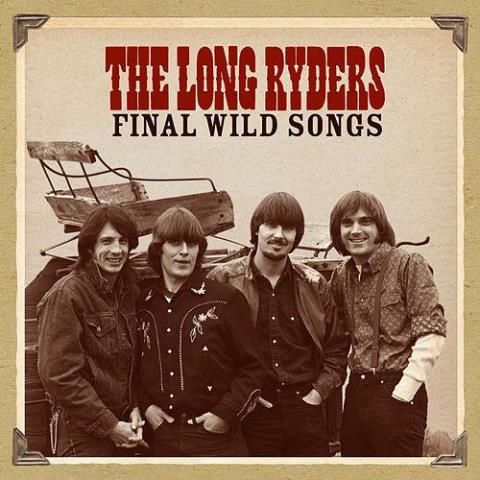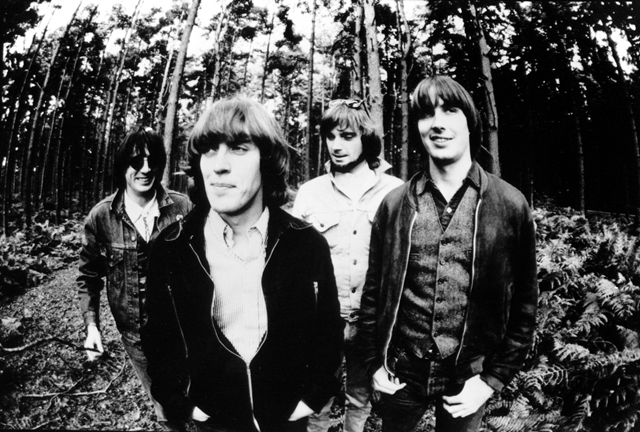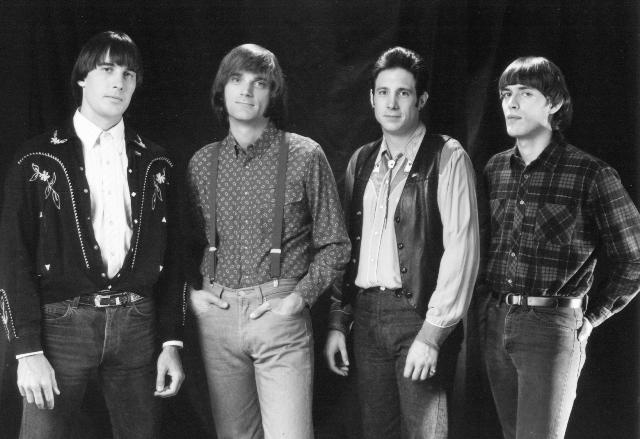For its 6 April 1985 issue, the NME chose The Long Ryders as its cover stars. The colour picture of the band was emblazoned “A Shotgun Wedding of Country and Punk.” The Los Angeles outfit attracted attention as part of a wave of California bands overtly drawing from the past. Local peers included The Bangles, The Dream Syndicate and The Three O’Clock.
Competition was tough. Bands from elsewhere in the States were also voguish during the pivotal years of 1983 to 1986: Green on Red, Let’s Active, R E.M. and The Replacements amongst them. The directly punk-rooted Black Flag and Hüsker Dü were on the up-and-up, as were the artier Big Black, Butthole Surfers and Sonic Youth. This was an American incursion on a scale not seen again in Britain until the Nineties’ grunge craze
 Three decades after that front cover, the arrival of Final Wild Songs helps assess The Long Ryders by collecting their entire studio recordings alongside previously unheard bonuses including a complete 1985 live show. Fans will need this final word on what is revealed to be an occasionally wayward, often frustrating, sometimes great yet always fascinating band.
Three decades after that front cover, the arrival of Final Wild Songs helps assess The Long Ryders by collecting their entire studio recordings alongside previously unheard bonuses including a complete 1985 live show. Fans will need this final word on what is revealed to be an occasionally wayward, often frustrating, sometimes great yet always fascinating band.
There’s no doubt The Long Ryders were significant. Before Americana was bandied with abandon as a genre label and alt country was invented, they mined the various seams of roots- and folk-inspired music which later helped Wilco and the like realise their vision. Whether that would have happened without The Long Ryders is moot, but they were there first. At this time, Jason & The Scorchers were more specifically country and the less-celebrated Rank and File were not as diverse. The Long Ryders were the only band bringing this eclectic take on America's music to the table.
The Long Ryders were not shy about instantly revealing their hand. Their debut EP 10-5-60 kicked off with "Join my Gang", with its lift of part of the guitar refrain from The Byrds' "So you Want to be a Rock 'n' Roll Star". Their eloquent, opinionated frontman Sid Griffin published a book about Gram Parsons in 1985. The band’s first album, 1984’s Native Sons, was co-produced by Henry Lewy, who had produced The Flying Burrito Brothers. Its cover picture recreated the sleeve image of the shelved second Buffalo Springfield album, Stampede. Yet, as the NME cover acknowledged, the band were not revivalists of America's past as such. Indeed, Native Sons' "Wreck of the 809" evinced a familairty with The Clash's "London Calling".
Final Wild Songs charts their short original lifespan as it played out on record: 1983 to 1986. The clamshell box contains four discs, a poster and a booklet. The latter has a brief introduction by Rolling Stone’s David Fricke and a track-by-track commentary mainly by Griffin, but with contributions from other former band members. Disc Four is an energised live show recorded in the Netherlands on 8 April 1985. The first three discs collect the released material in chronological order. Each is rounded off by studio and live tracks which were, in the main, unissued at the time. A packaging oversight niggles: the annotation fails to tie individual tracks to their original albums or EPs, so it is not instantly possible to determine their sources.
 The Long Ryders came together in late 1981. Griffin had been in the Sixties clones The Unclaimed, where he was restricted by the band’s template style. With Virginia-born, country-loving guitarist Stephen McCarthy, who stepped in after a brief link-up with The Dream Syndicate's Steve Wynn, Griffin, Greg Sowders (drums) and Tom Stevens (bass) immediately and deliberately set out to revivify America’s past.
The Long Ryders came together in late 1981. Griffin had been in the Sixties clones The Unclaimed, where he was restricted by the band’s template style. With Virginia-born, country-loving guitarist Stephen McCarthy, who stepped in after a brief link-up with The Dream Syndicate's Steve Wynn, Griffin, Greg Sowders (drums) and Tom Stevens (bass) immediately and deliberately set out to revivify America’s past.
Unlike, say, the early Wilco or Uncle Tupelo, they did this initially by tackling different aspects of their chosen inspirations on different songs. Their sound was not unified. As Final Wild Songs progresses, the Byrds-like “Ivory Tower” contrasts with the boogie-country of “Run Dusty Run”. “Too Close to the Light” is Rain Parade-ish psychedelia, while "Fair Game" echoes The Everly Brothers.The jukebox flavour dissipated as the band evolved, and second album State of our Union (1985) is more evenly country slanted overall and harder-edged. It’s their best release.
Their third and final album, 1987’s Two-Fisted Tales, is less agreeable, largely due to the combination of an inappropriate big production sound and awkward songs such as “A Stitch in Time” and the straight-ahead country-rocker “Prairie Fire”, where it sounds as though the goal was the anthemic. Neither the songs nor the band were breathing. Perhaps their label Island was trying to recast The Long Ryders as a stadium band? Fittingly and ironically, they went on to support their Joshua Tree-era label-mates U2. The Long Ryders had formed with Gram Parsons as an inspiration and U2 had latterly reinvented themselves as wildly unlikely Parsons devotees. The Long Ryders began to fall apart in late 1987.
Final Wild Songs is poignant. The Long Ryders clearly had their eyes open, knew what they were doing and dancing with. But they never found their own identity.















Add comment